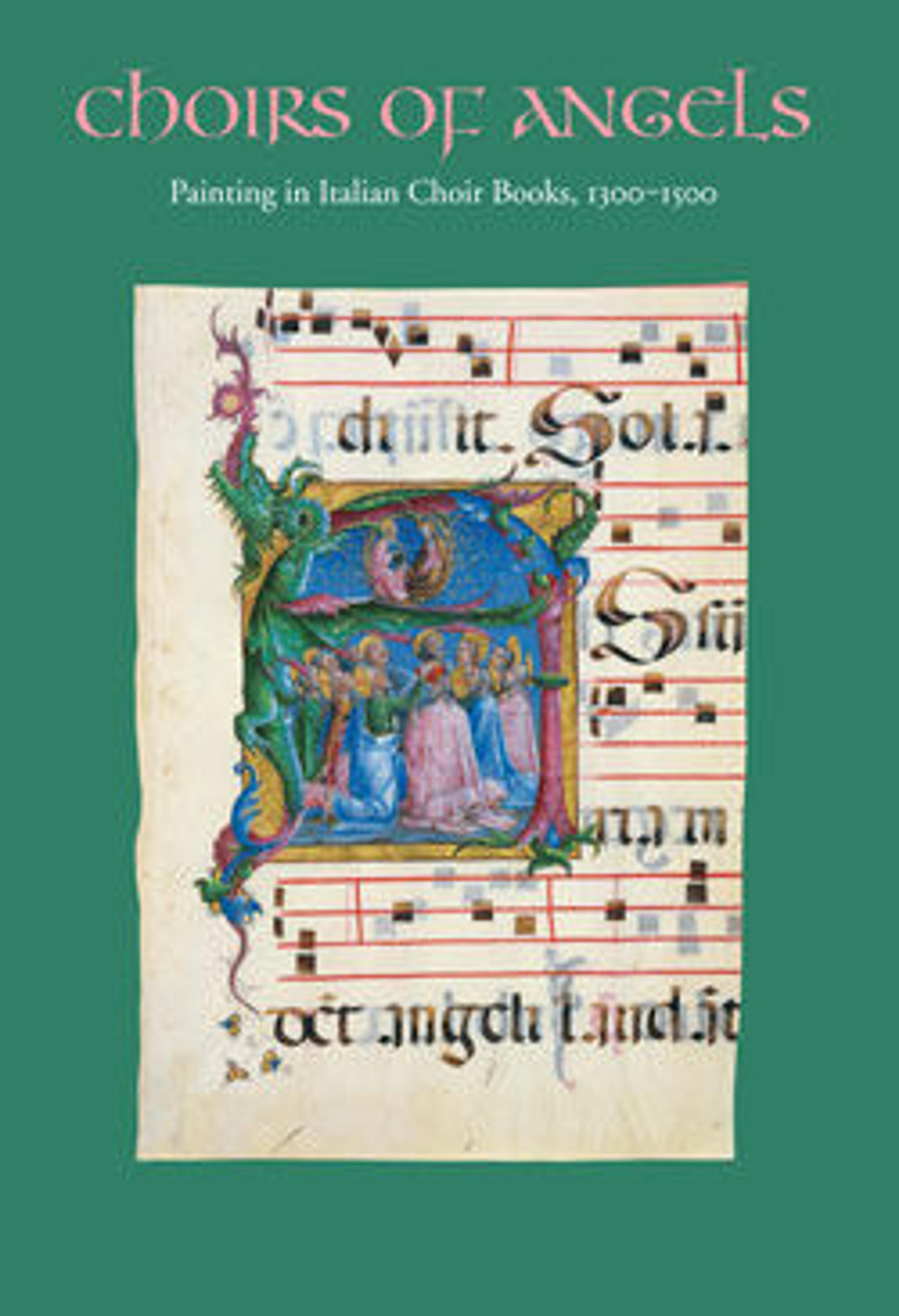Annunciation in an Initial M
The initial M illustrates an antiphon for the Feast of the Annunciation (March 25): Missus est Gabriel Angelus ad Mariam Virginem ("The Angel Gabriel was sent to the Virgin Mary").
In this initial, the illuminator used the form of the letter M to divide and frame the figures of the Virgin and the angel Gabriel, kneeling before her. The wood floor, rendered with a spiraling grain pattern, suggests that the setting is a domestic interior. This cutting may be an early work by the anonymous painter and illuminator known as the Maestro Daddesco, who was either a contemporary or a follower of the Florentine artist Bernardo Daddi and was a major figure in Florentine illumination during the first half of the fourteenth century.
In this initial, the illuminator used the form of the letter M to divide and frame the figures of the Virgin and the angel Gabriel, kneeling before her. The wood floor, rendered with a spiraling grain pattern, suggests that the setting is a domestic interior. This cutting may be an early work by the anonymous painter and illuminator known as the Maestro Daddesco, who was either a contemporary or a follower of the Florentine artist Bernardo Daddi and was a major figure in Florentine illumination during the first half of the fourteenth century.
Artwork Details
- Title:Annunciation in an Initial M
- Artist:Maestro Daddesco (Italian, Florence, active ca. 1320–40) (?)
- Date:ca. 1310–15
- Medium:Tempera and gold on parchment
- Dimensions:5 3/8 x 5 1/4 in. (13.6 x 13.4cm)
Stave: 1 5/16 in. (3.4cm) - Classification:Manuscripts and Illuminations
- Credit Line:Robert Lehman Collection, 1975
1975.1.2478 - Object Number:1975.1.2478
- Curatorial Department: The Robert Lehman Collection
More Artwork
Research Resources
The Met provides unparalleled resources for research and welcomes an international community of students and scholars. The Met's Open Access API is where creators and researchers can connect to the The Met collection. Open Access data and public domain images are available for unrestricted commercial and noncommercial use without permission or fee.
To request images under copyright and other restrictions, please use this Image Request form.
Feedback
We continue to research and examine historical and cultural context for objects in The Met collection. If you have comments or questions about this object record, please contact us using the form below. The Museum looks forward to receiving your comments.
